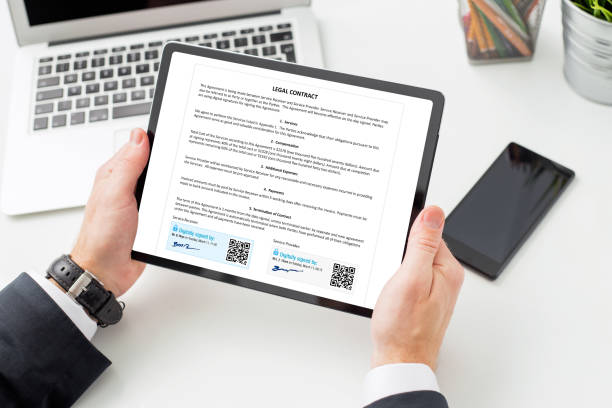It’s hard to believe that counterfeit documents and false identification are still significant businesses. After all, we live in a digital society in which it appears that most of our time is spent over the internet and accessible digitally through passwords, We’ve grown accustomed to thinking that online information, such as digital bank accounts and tax gateways, are fundamentally more important than physical papers, that we frequently overlook the fact that document theft is a lucrative business.
Document verification theft actually hurts the world economy by £3.2 trillion every year. It is amongst the world’s major crime industries and it is still growing. But what can businesses and authorities do to hinder this type of fraud?
Why has Document Fraud been so Common in the Past?
Fabrication, counterfeiting, altering, selling, or using ID documents and other fake documents for illegal conduct is how document fraud is characterized. As a word, it can refer to both the altering of legitimately issued government papers and the manufacture of fraudulent documents that mirror legitimate ones.
Its continuous appeal among fraudsters is owing to the fact that forged papers may be utilized in a variety of criminal activities, including terrorist attacks, drug trafficking, money laundering, and trading and financial felonies.
Document Fraud Types
Before we discuss strategies to avoid document fraud, it’s vital to note that there are several avenues to take:
Image Fraud
When a fraudster delivers a picture of an ID document instead of the whole document. Image deception is more common, which makes it easier to alter. Image fraud falls into 4 subcategories. Physical tampering, which includes putting a cut image on a document, then electronic tampering, which involves manipulating an ID, white hacking, which is a moral kind of deception that includes testing a document’s or network’s weaknesses, and liveness theft, in which scammers make it hard for the organization to determine whether or not a document is genuine.
Illegitimate Documents
These are fully fake papers that lack crucial qualities like holograms and other requirements. These are divided into two types: counterfeits, which are exact replicas of the genuine, and pseudo papers.
False Documentation
Contrary to legitimate documents, false documents mean when a person tries to utilize a genuine ID document that is owned by someone else, and after stealing the document they pretend to be that someone and use their documents for their own purpose.
Documents modification
This is a multi-layered method of document theft that happens when an authentic and legitimate document is tampered with. Counterfeits and the tampering of blank papers obtained straight from the producers are examples of this.
How do we Go about Preventing and Detecting Fraud?
While the times of old-tech manipulations are no longer in use, lawbreakers are becoming increasingly inventive. As the solutions used to prevent and detect these offenses have improved, so has the sophistication of the fraud.
Fortunately, regulators may keep ahead of fraudsters by adopting best practices and employing advanced document verification companies designed to detect fraud.
Prevention
The answer to avoiding document theft is to produce a more safe document, which appears easy enough but involves a variety of sophisticated approaches. A series of critical features might be incorporated to make manipulating current identification papers far more difficult. This involves employing polycarbonate for ID papers because it does not get delaminated, which makes it hard to remove the document’s layers. A fraudster with a magnifier and a couple of tweezers will be unable to witch photographs or data from the paper without damaging the ID.
Other options involve using negatively or positively engraving in the type of optics and micro text. Authorities can swiftly examine the truthfulness of transparent ‘windows’ on ID documents since any type of manipulation can be easily noticed as scratching on the see-through area. Stacking numerous windows to build a model that suits the card format gives even more protection while still maintaining the document’s appearance.
Detection
As previously said, detecting counterfeit papers necessitates a clever blend of human knowledge and modern technology. For instance, identity verification and verify documents online can reduce the danger of deception, but they have their limits, like when performing 2D checks under bright light. Nevertheless, combining this with a search of different databases to discover if the document has been looted or misplaced can be useful.
The advancement of Artificial Intelligence (AI) technologies is substantially assisting automated fraud detection software. Machines are constantly increasing their capacity to identify fraudulent behavior by leveraging AI. This involves improved data consistency assessments, enhancing the quality of data flowing in, and the potential to more accurately validate electronic documents.
Bottomline
Ultimately, combating document fraud in this digital age will require a mix of the latest preventive measure like AI-led effective document checkers and human approaches. When considering that biometrics are progressively being used to verify papers, it’s evident that the battle against document theft is shifting to the advantage of those who maintain the law.

